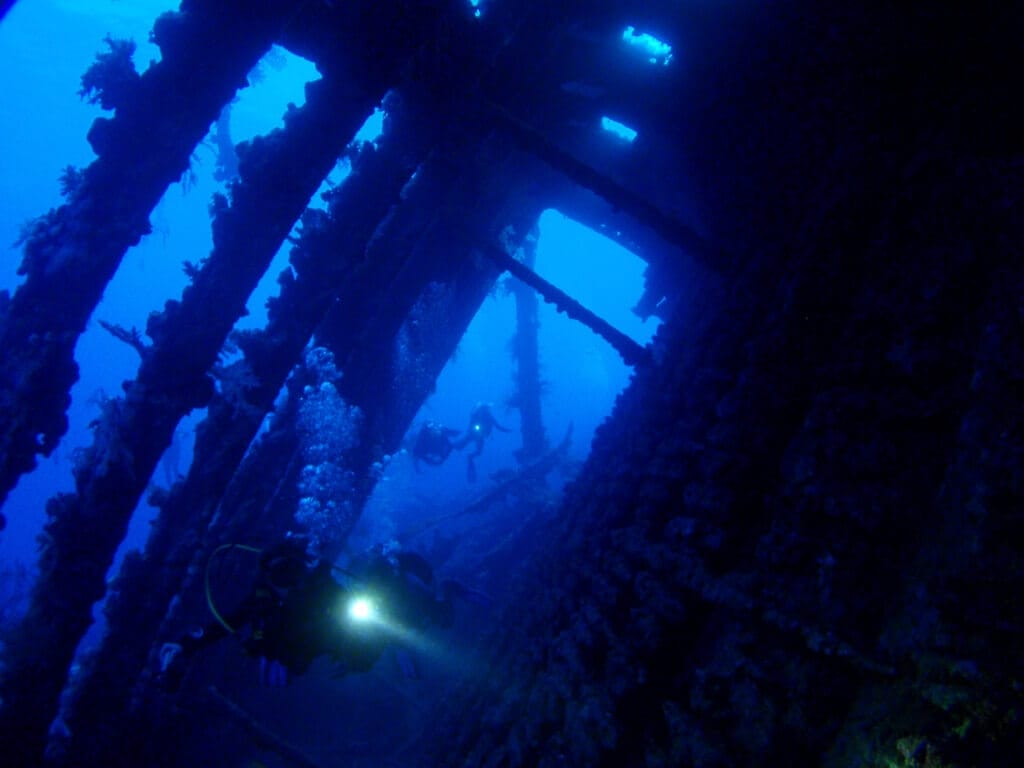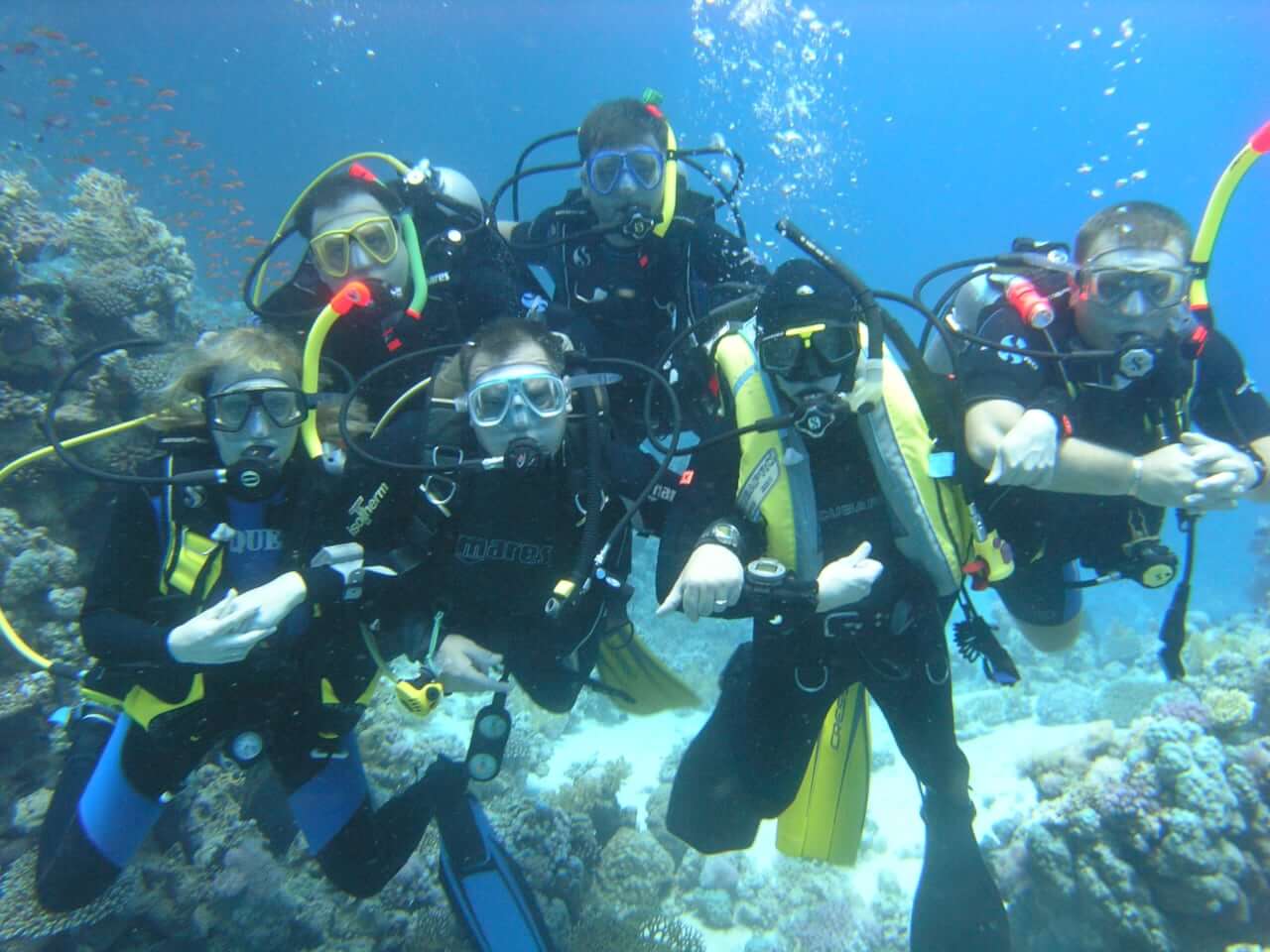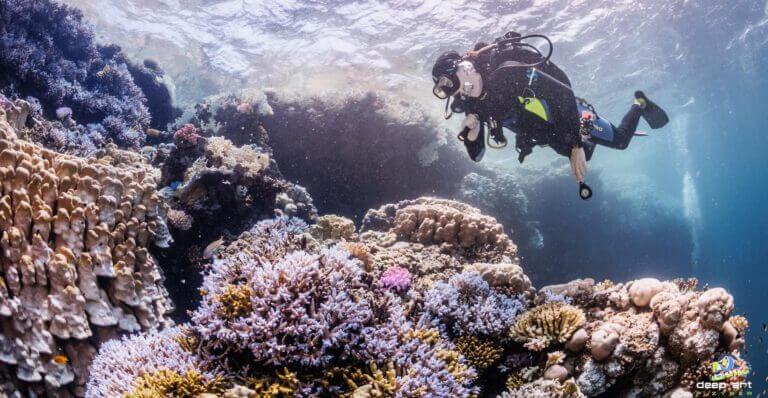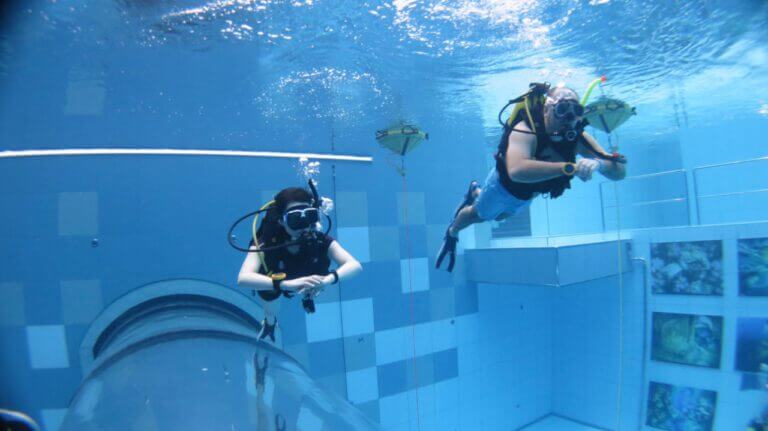Diving from one side is easy. We are in the water and even underwater but at the same time the equipment provides us with the ability to breathe at all times. That is, we are suddenly underwater as if we were walking. On the other hand, however, the water around us sends us information that all is not well. Our body may perceive the environment as “unfriendly.” Some people need some time to feel “at home.”
Quite a few people start diving with the so-called intro or, officially written, Discover Scuba Diving (DSD) program of one of the diving organizations.
Discover Scuba Diving (DSD)
Discover Scuba Diving (DSD) is a program that provides an opportunity to dive with an instructor without a course for a person who has neither training nor diving skills. Something like a tandem jump with an instructor with a parachute.
Together with a diving instructor “by the hand” you will learn your first diving skills and have the opportunity to dive underwater. We recommend places where it’s nice and cool underwater – a coral reef or the deepest artificial reservoir in Europe, the Deepspot near Warsaw.
DSD is a program during which you first learn how to breathe underwater at shallow depths and then go on an underwater excursion up to 12 meters – which is pretty serious diving.

How to choose a good DSD?
One of the important decisions when we want to dive for the first time, that is, while on vacation to sign up for an intro program, is to decide where to buy this intro. Intra are programs that are often an important source of earnings for dive bases, but at the same time, due to sales through intermediaries, it is often a program on which one saves and what is cheap is expensive or poor.
First of all, try to buy the program at the source, that is, not at a travel agency or on the boulevard, but at the dive center in your hotel or at the dive center on the seashore. Then the money you pay will go entirely to staff and organizational costs, and there is a better chance that you will buy a well-prepared program.
The program should consist of two parts:
- Diving in the pool or shallow water – if the program is from a boat then to consist of two parts – learning basic skills with a weighted rope thrown from the stern of the boat, where one-on-one with the instructor you will practice breathing underwater, mastering submergence and emergence and maintaining so-called neutral buoyancy (like weightlessness underwater).
- And from the second part – a diving trip to the reef to a depth of 12 meters with an instructor. During an excursion organized either right at the hotel or at some spectacular dive site in the area you will see a beautiful reef, an “aquarium of fish”.
- The ideal place for DSD is Deepspot because here you will learn a lot and have a super adventure.
That is, Good DSD is
- Separating the shallow part from the deep part. That is, initial training from diving.
- Small groups
- Clear, warm water
- Good organization
A great way to get used to the water and prepare for diving is to swim and dive in ABC equipment, i.e. fins, mask and snorkel. Such swimming is an ideal way to learn swimming techniques in fins. Blowing through the tube and breathing from it.
Everything will come in handy later when diving.
In the next episode we will write how to choose a good diving course.

Back to the problem:
Is diving difficult? – it must be said that some elements of diving are very easy and some, however, are difficult.
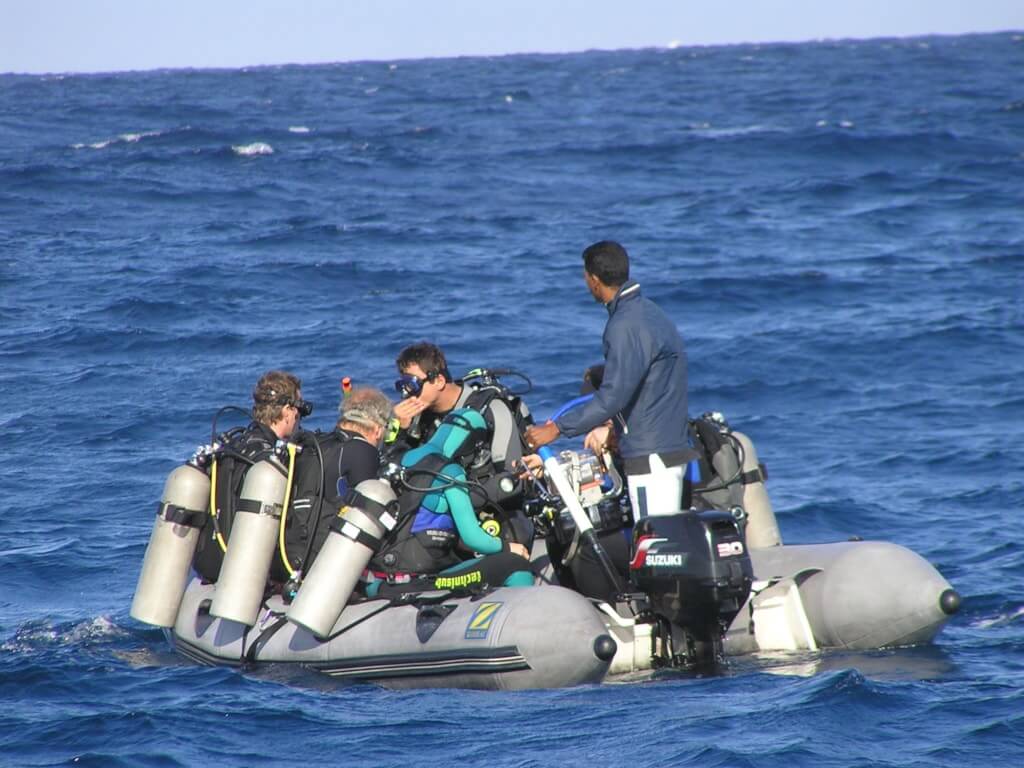
It’s easy because
It’s easy physically – underwater neither we nor the equipment has weight – we are like in weightlessness. It is no coincidence that cosmonauts train to work in weightlessness underwater.
It is easy to breathe underwater. The automatic breathing machine connected to the cylinder gives us air in a completely natural way when we inhale and the exhaled air goes out creating the bubbles known from the movies.
Pressure is not any clearly perceptible problem when diving. The automatic breathing machine gives us air to breathe at the pressure that prevails at a given depth so the increase in pressure is felt only in the ears just like when landing an airplane, but this is something divers quickly learn to deal with.
Caeson Disease – Decompression Sickness – DCS – with recreational diving – such as typical reef dives we are shallow and short enough (this is guarded by wrist computers like watches) that the problem of Decompression Sickness known from movies about underwater work does not occur.
Nitrogen nar cosis – the legendary narcosis of the deep – experienced as a slight intoxication (one glass of port every 10 meters) at depths of typical dives of 10-20 meters is not a problem as are two glasses of strong wine.
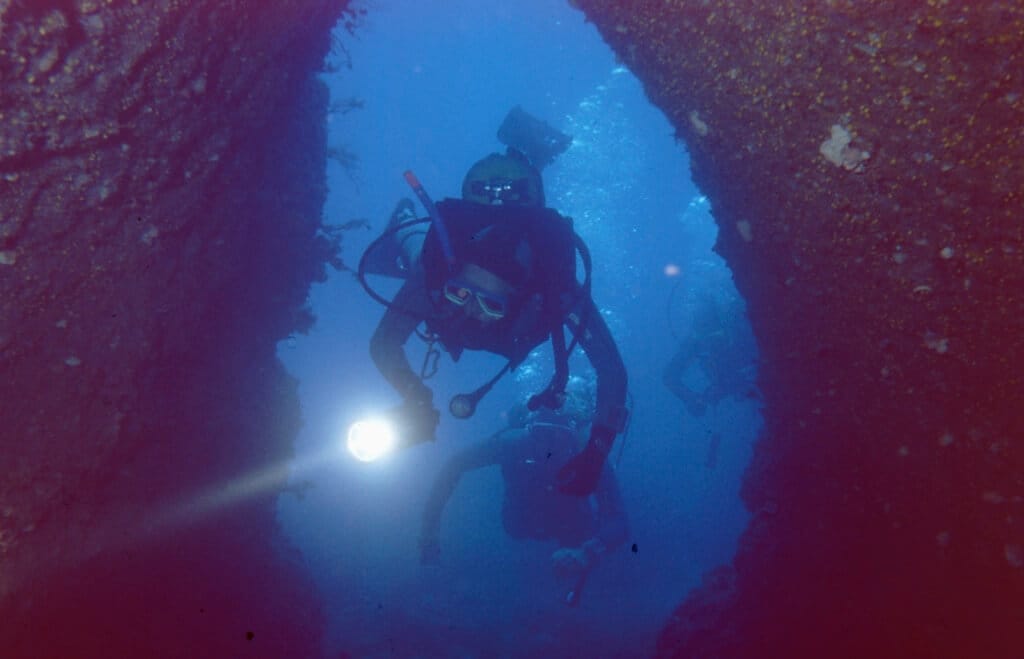
It is difficult because
It is difficult on the shore how heavy equipment has to be dressed, but on the other hand the equipment weighs only as much as a large backpack and in addition you can dress the equipment in the water – where it weighs nothing.
For some people the water on the face may be unpleasant, but if you know how to swim an indoor frog it will be easy and if someone does not like the indoor frog, the water can be used to quickly. The first exercise that brings some excitement is removing and breathing underwater, without a diving mask. This is practiced in case of the very unlikely failure of the mask underwater (strap breakage). After re-dressing the mask, you need to do an exhalation through the nose and the water from the mask is pushed out by the air and after a while the mask is emptied of water. A skilled diver can easily do this several times on one inhalation.
In addition to a cylinder with an automatic air supply, the diver is wearing what is called a Jacket – this is a cylinder stretcher on one side (like a backpack) on the other side of the Jacket is equipped with a bag that can be filled with air from the cylinder or emptied. The jacket thus acts underwater as a ballast tank, allowing it to maintain zero (neutral) buoyancy, and on the surface, when inflated, it acts as a life jacket like the ones shown in airplanes (by the way, the first jackets – the so-called chomsteins were airplane life jackets). To begin with, we need to master allowing air into the jacket with one button and emptying the jacket of air with the other button. Seemingly easy but you have to learn. With the help of the jacket, we learn to have neutral buoyancy so that we hang in the water depths like a cosmonaut in weightlessness.
So is diving easy? – Yes, and on the next vacation we sign up for an intro on the reef or right now we are signing up for an intro in Deepspot near Warsaw.
